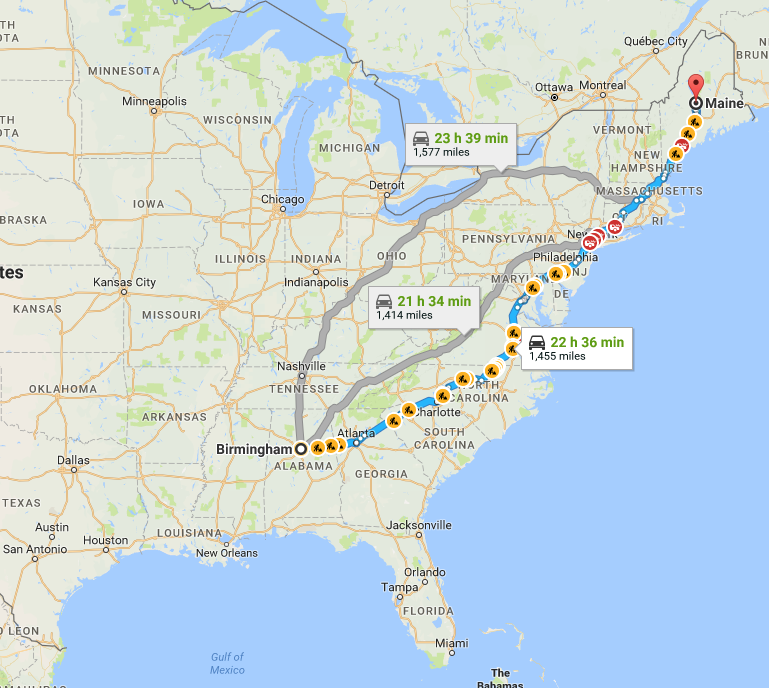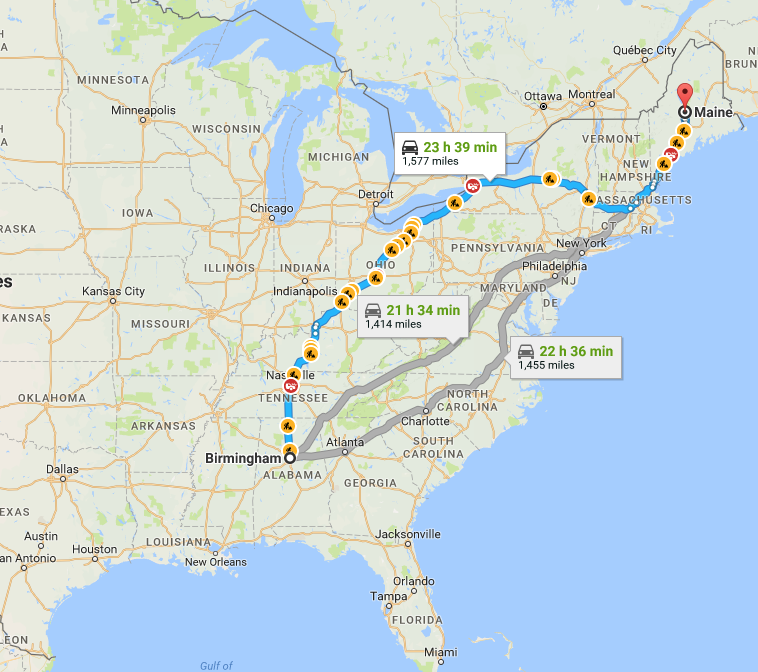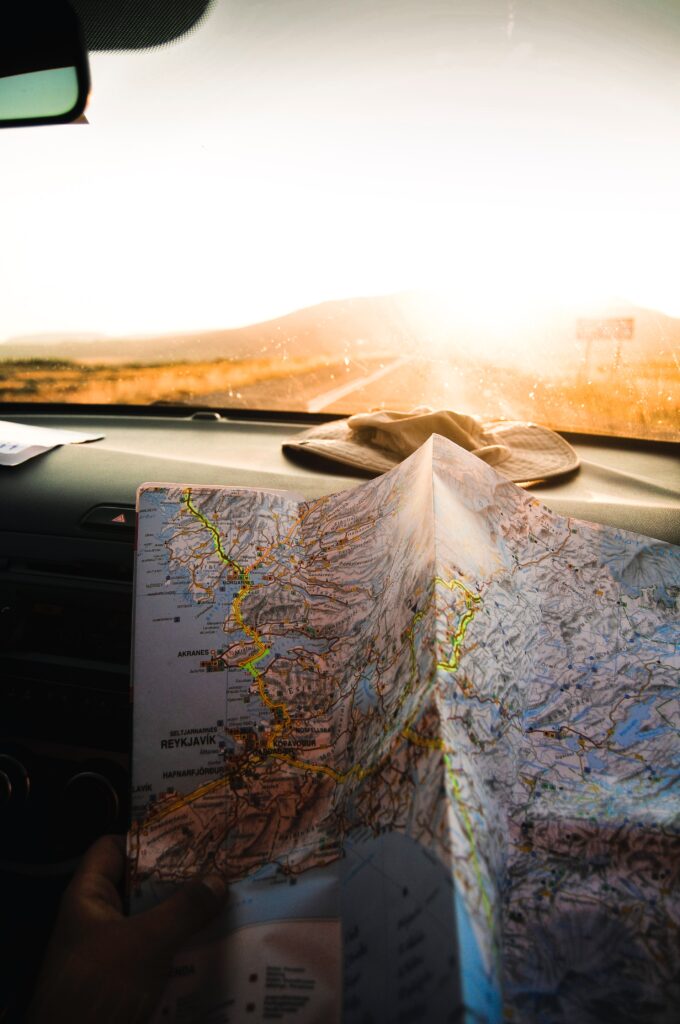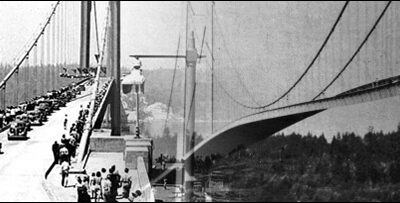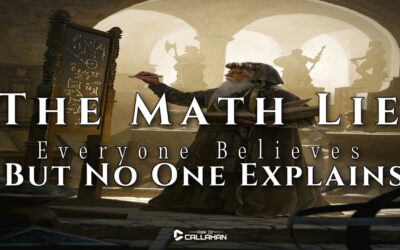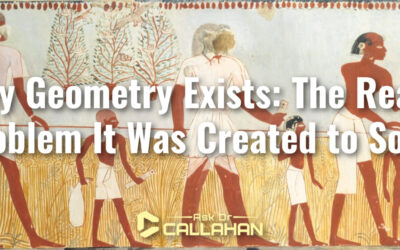When you plan a road trip, you use math literally every step of the way. What you may not know, however, is the right math term for what you’re calculating. So today, I’m going to walk you through a few steps of planning a road trip so you can see how Algebra helps you get from point A to point B successfully.
The first place you will encounter math when planning a road trip is by figuring out how far it is from where you want to start to where you want to go.
For the sake of this example, we are going to plan a road trip from AskDrCallahan’s headquarters in Birmingham, Alabama all the way to Maine.
Now, if you use technology at all you will likely be immediately crying, “But, Cassidy! What about GPS?” Well, sure, that’s a great tool to use. Let’s see what google says when we use it to calculate the distance from Alabama to Maine.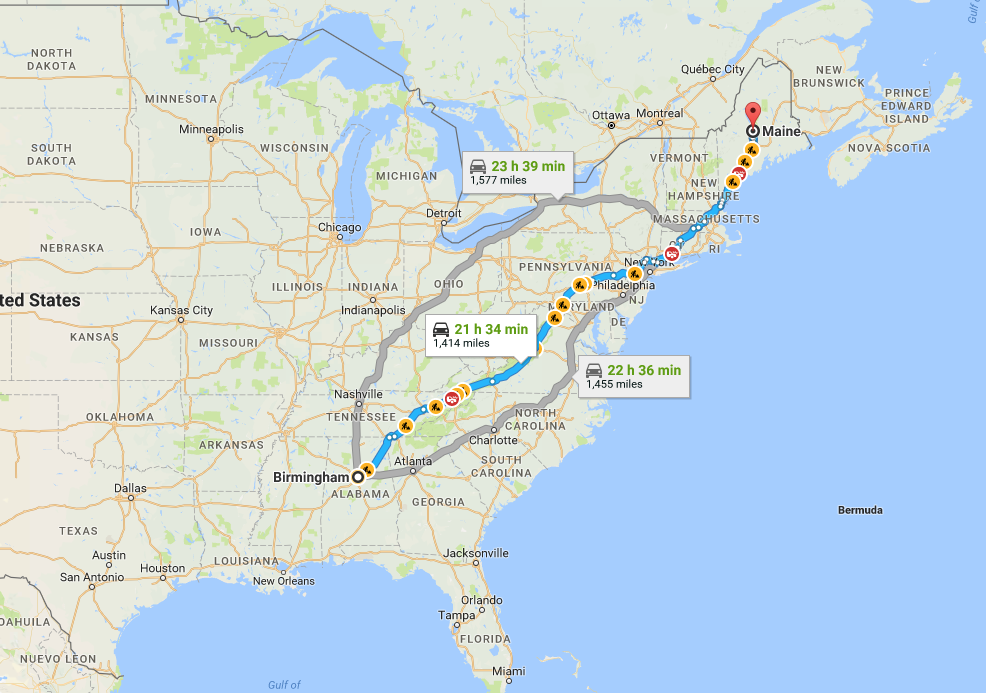
The first thing you’ll notice is how awesome the map looks. After that, though, pay attention to the three lines shown on the map. See how there are three different mapped out routes from Alabama to Maine?
And they all have different distances. Different distances means it takes longer to travel some of the routes than others.
But is that accurate?
Look again.
Notice some routes have extensive construction where other routes have far less. The number of times you stop along your chosen route, including construction zones, can make a shorter distance take longer to travel.
So how do you decide which one is right for you? Well, you have to use your logical thinking cap to consider which variables matter most to you, and you can apply a little Algebra.
In Algebra 1 you are taught a formula called The Distance Formula.
Distance = Rate (Time)
It allows you to calculate the Distance, Rate, and Time of any given trip.
That means, if you plug in a slower rate for a longer trip, you might find that the longer route actually gets you there faster if it has less construction and allows you to go at a faster rate (speed).
A second place you will encounter Algebra 1 when planning a road trip is with your GPS.
Now, I know, you’re thinking—wait! GPS is a mapping service and it works by itself. I definitely will NOT need math when I’m using GPS.
Well, it turns out, when you take a long road trip there are things like wrecks, batteries that die, and just straight getting lost that can confuse both you and your onboard GPS to such a degree that you need to do your own recalculating.
Will you be able to get yourself to your desired destination if the GPS goes out?
What will you do when the GPS isn’t aware of a road hazard that’s only been updated locally and therefore isn’t showing up on your GPS’s navigation system? Will you be able to take an alternate route?
The basics of using a good old fashioned paper map include two main math equations: Scale and Coordinates.
Scale is the idea that a large distance is represented by a small measurement. On a map, it might be shown as 1 cm = 10 miles. Therefore on your paper, the 1413 miles between Alabama and Maine would be a distance on paper of 141.1 cm. That allows you to hold an entire country in your hands (or in your car).
Coordinates on a map are written a lot like what you learn in Algebra 1 when you learn to graph on a coordinate plane. There are lines that run vertically, called Longitude lines and horizontal lines that are called Latitude. In Algebra 1, you call these the x and y axes.
On a map, the equator is represented as 0 degrees and you count up and down from there to find different points on the globe.
Try it At Home
You can try your hand at reading a map by finding the country located at (0 degrees, 60 degrees West)
The west designation there is included to let you know to look in the western hemisphere. Give it a try. Did you find it? (Post your answer in the comments!)
Now there’s a massive amount of additional Algebra and Geometry you can practice when planning a road trip, but hopefully, this gives you a nice introduction to exactly how math helps make traveling a lot more fun, and a lot less dangerous!
Just planning one road trip you will use the Algebra concepts of estimation, rounding, decimals, fractions, ratio, proportion, rational expressions, conversions, rates, and The Distance Formula. Not to mention the regular operations of additional, multiplication, division, and subtraction.
Math is a powerful tool that works behind the scenes on many of our everyday activities—like going on vacation, enabling us to do more and go further by knowing how to use it.

